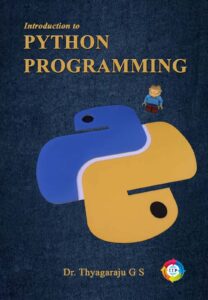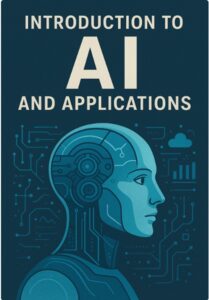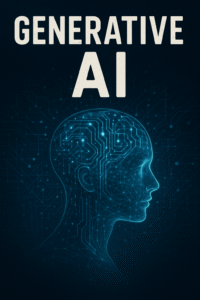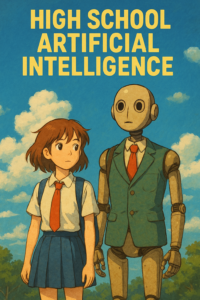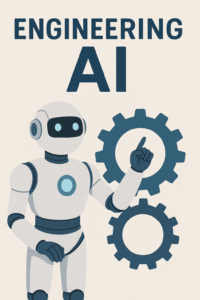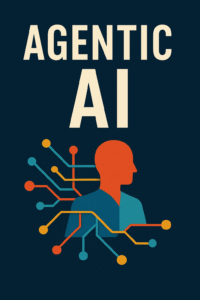Dr.Thyagaraju G S and Palguni G T
Introduction
In today’s digital-first world, Artificial Intelligence (AI) is not a distant dream but a transformative force impacting every domain of life—from healthcare and transportation to entertainment and education. As the boundaries between science fiction and reality blur, it becomes imperative to equip the next generation with the knowledge, tools, and ethical compass to navigate an AI-driven future. Introducing AI education at the high school level is a critical step in this direction. It empowers students to become not just consumers but thoughtful creators and responsible innovators.
Why AI in High School?
1. Preparing for the Future Workforce : A 2023 report by the World Economic Forum stated that over 85 million jobs may be displaced by AI, but 97 million new roles may emerge, especially in areas involving data, machine learning, and automation. Early exposure ensures students develop the foundational skills necessary to thrive in this evolving job market.
2. Nurturing Ethical Digital Citizens : With great technological power comes great responsibility. Teaching AI in schools allows students to understand ethical concerns like algorithmic bias, data privacy, and automation’s impact on employment. Students learn to use AI responsibly and advocate for technologies that serve humanity.
3. Encouraging Interdisciplinary Thinking: AI doesn’t exist in isolation. It intersects with biology (genomics), history (predictive modeling), literature (natural language processing), and even art (generative AI). High school AI curricula can foster a multidisciplinary approach, making students well-rounded thinkers.
Pillars of a High School AI Curriculum
1. AI Fundamentals
- What is AI? Understanding intelligence, algorithms, and automation.
- Types of AI: Narrow AI vs. General AI vs. Superintelligence.
- Milestones: From Turing’s test to GPT and autonomous vehicles.
2. Machine Learning and Data Science Basics
- Concepts: Training data, labels, features, supervised and unsupervised learning.
- Real-world use case: Students can build a simple spam classifier using an open-source dataset.
- Tools: Teachable Machine, Scratch ML extensions, or Jupyter Notebooks with Python.
3. Natural Language Processing (NLP)
- Basics of how AI understands and generates human language.
- Use case: Create a chatbot that answers questions about climate change or school events.
4. Computer Vision
- Basics of image processing and object recognition.
- Use case: Build a project that classifies recyclable vs. non-recyclable waste using images.
5. AI Ethics and Society
- Discussions on bias in facial recognition.
- Scenario-based activities: Should AI be used in surveillance? In hiring decisions?
- Reflection journals: Students write on “The AI I want to create”.
6. AI in the Real World: Applications Across Disciplines
| Subject | AI Integration Example |
|---|---|
| Biology | Using AI to analyze DNA sequences or predict disease outbreaks. |
| Geography | AI models to simulate the effects of climate change on local ecosystems. |
| History | Predictive modeling to explore alternative outcomes of major battles. |
| Literature | NLP tools to perform sentiment and theme analysis in Shakespeare’s plays. |
| Art | Using GANs (Generative Adversarial Networks) to create art pieces or music. |
| Economics | Forecasting stock market trends or consumer behavior using historical data. |
| Environmental Science | AI-powered sensors to track pollution or wildlife movement. |
Hands-on Projects and Illustrations
1. Emotion Detector App: Students can create an app that uses computer vision to detect emotions in real-time video feeds, exploring psychology and machine learning together.
2. AI-Powered Virtual Assistant: Using tools like Dialogflow or Rasa, students can build a school-specific virtual assistant that answers timetable queries or cafeteria menus.
3. AI in Robotics: Combine AI with Arduino or Raspberry Pi to build robots that follow paths, avoid obstacles, or respond to voice commands.
4. Storytelling with GPT Models: Students can input story prompts and collaborate with AI to co-write fictional stories, which they then critique for bias, coherence, and creativity.
5. Smart Campus Simulation: Students design a smart school campus that uses AI for automated attendance, energy conservation, and personalized learning paths.
Benefits of AI Integration in High School Education
- Boosts Creativity: Generative AI tools empower students to push the boundaries of imagination.
- Improves Critical Thinking: Students learn to evaluate AI outputs, question sources, and test model accuracy.
- Promotes Collaboration: Project-based learning encourages teamwork and communication.
- Builds Resilience: Learning how AI fails (and how to fix it) cultivates problem-solving.
Global Best Practices
- India: CBSE introduced AI as an elective subject from Class IX, supported by the Ministry of Education and Intel.
- USA: The AI4K12 initiative offers a structured AI curriculum framework aligned with student maturity.
- Singapore: AI for Kids program introduces logic, decision trees, and ethics in gamified formats.
- UK: BBC micro: bit and Raspberry Pi Foundation support hands-on AI activities in schools.
Challenges and Solutions
| Challenge | Potential Solution |
|---|---|
| Lack of Teacher Training | AI Teacher Fellowships, online certifications, and collaborative workshops. |
| Resource Constraints | Use of cloud platforms (Google Colab), open-source tools, and low-cost hardware. |
| Fear of Tech Replacing Teachers | Position AI as a support tool, not a replacement. |
| Curriculum Overload | Integrate AI into existing subjects instead of treating it as an extra course. |
Conclusion:
Building Tomorrow, Today : Introducing Artificial Intelligence at the high school level is a powerful investment in the future. It not only prepares students for careers but shapes their worldviews, critical faculties, and ethical frameworks. The goal isn’t merely to teach machines to think—it’s to inspire young minds to think more deeply about machines and the kind of world they want to create with them.
As Abhay Jere, Vice Chairman of AICTE, rightly emphasized, “The future of education isn’t just about knowledge, it’s about experiencing it firsthand.” With AI, students won’t just learn about the circulatory system—they’ll navigate through it in a simulated 3D world, interacting with red and white blood cells. They won’t just hear about climate change—they’ll use AI models to predict its impact on their own communities”.
High school artificial intelligence is not just a subject; it’s a movement to democratize innovation, deepen empathy, and build a future where human intelligence and artificial intelligence grow together.
“The best way to predict the future is to create it.” — Abraham Lincoln



